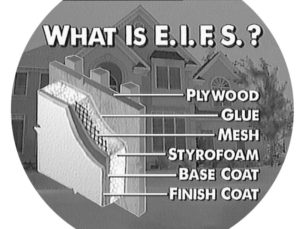Frequently Asked Questions
What are the minimum requirements for all stucco systems?
1.) have all penetrations, transition joints, and trim completely sealed with Dow Corning 795 sealant (or equivalent),
2.) have proper flashing and sealants around windows and doors,
3.) have ground clearance (termination of wall at grade)(see “Termination Above Grade” document)
Why is Dow Corning's 795 sealant so important?
What is E.I.F.S.?
This is the term for the six layers used in most stucco systems — these layers are the plywood, glue, mesh, styrofoam, base and finish coats. Prior to recent building code changes, the foam board insulation used in EIFS was placed on the wall below grade. It was discovered that foam in contact with the ground causes conditions conducive to termite infestations. Often the first indication that an infestation problem exists is a swarm of termites. This swarm occurs either inside the structure or close to the outside of the home. With EIFS-clad homes, the visible evidence of infestation is blocked from view by the exterior siding. In fact, the exterior siding typically looks pristine and shows no signs of any problems; however, behind the EIFS cladding, the termites tunnel into the foam and establish themselves inside the home. 
What are the five steps for proper joint preparation and sealant application?
2.) Prime — if required, primer is applied to the clean surface(s).
3.) Pack — backer rod or bond breaker tape as required.
4.) Shoot — sealant is applied by “pushing the bead” into the joint cavity.
5.) Tool — tooling techniques are used to strike a flush joint and make certain the sealant has the proper configuration and fully contacts the joint walls.
What memberships, affiliations and certifications does Diversified Stucco Services possess?




![]()


